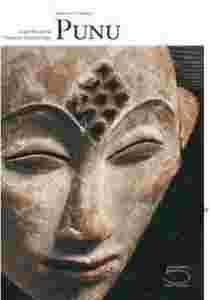|
Situated in the south-west of Gabon, the Punu are
part of a group of people known essentially for their
white masks. These objects, which have never ceased to
impress collectors and enthusiasts of African art, had
already fascinated Western artists at the start of the
20th century; Picasso, for instance, owned one. The
idealized realism of the face covered with white clay,
the slightly narrowed eyes, the mouth with finely-edged
red lips and the sophisticated head-dress composed of
several locks of plaited hair are some of the stylistic
features of these masks. The volume studies the context
of ritual use of these important objects, which the Punu
and related peoples would bring out for their dances,
one of which is called mukuyi.The masks belonged to the
bwiri, a secret society of men, and those wearing them
were only chosen amongst initiates. They would perform
acrobatic dances on stilts, most frequently at funerary
rites and in honor of the ancestors embodied by the
masks. These would take on a policing role and could
force the forces of evil to retreat. The dances still
exist but within a context of rejoicing, and the
anonymity of the wearer is no longer respected.This
study of the Punu traditions and of their overlapping
with other peoples in this region of southern Gabon, is
also pursued through an examination of other, far less
well-known objects, such as the guardian statues of the
bones of the deceased, amulets, musical instruments and
some other elements of their material culture. |
|

